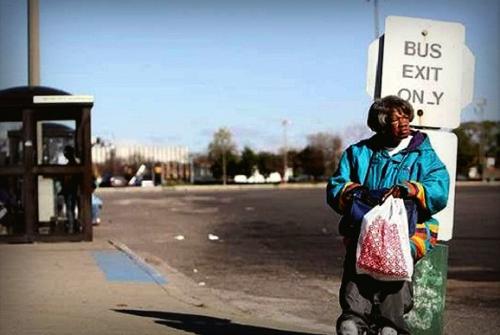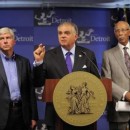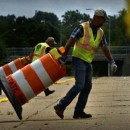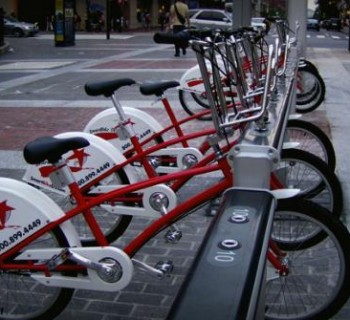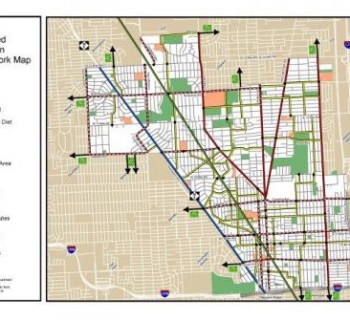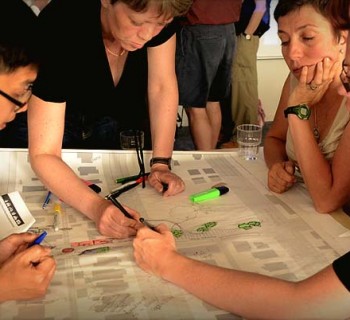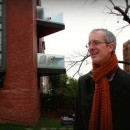DETROIT—This is a continuation of last week’s piece on transportation inequity with excerpts from an interview with two Marygrove College Social Justice Program colleagues: Dr. Brenda Bryant, dean of Community Based Learning and a founder of the Social Justice Program, and Elena Herrada, coordinator of the Masters of Social Justice Program.
Here’s what Herrada and Bryant have to say:
… on transportation and education.
Herrada: If there was transportation – public, private anything – that went from neighborhoods to schools, such as to the high schools and the elementary schools and to the universities, like Wayne State, Marygrove, U of D, Wayne County Community College, and actually had a network that came and went every 15 minutes, whether it was one person that bought a van or a publicly owned transportation system, life in Detroit would improve exponentially if people could get to where they have to go in order to improve their lives.
People would be able to get to work and do other things. There are so many days that kids don’t go to school because they don’t have a way to get there, and the bus didn’t come. There is an amazing number of absences as a result of transportation. And that’s a very, very direct cause to school success. Then you fail, and go to prison. All of that is tied to how we get to where we’re going.
… on taking the bus in Detroit.
"There are so many days that kids don’t go to school because they don’t have a way to get there, and the bus didn’t come." ~Elena Herrada
Herrada: I’ll give you an example. I put my car in the shop when I worked at the Y downtown and thought I could catch the bus to pick up the car that was at Trumbull and I-94. I began to walk. I walked from the Y to Michigan Avenue and continued to walk. In this time, I saw buses at the bus station, but I did not see a bus going the way I was going. I got to Trumbull and walked north on Trumbull, and I walked all the way to where the car was in the shop without one bus passing me.
I walked two hours. As I passed the bus stops, I passed many elderly people; as I was picking up my pace, as I had other things to do that day and actually thought I would be able to catch the bus, pick up my car and go back to work, I realized I was taking a very long walk and passed people.
As I walked at a faster rate, I would say “behind you” as I walked by people. I startled them as people are afraid of getting jumped.
There were old people at the bus stop with walkers, one person in a wheel chair. There were several people waiting at the bus stop. And they weren’t walking like I was walking because they were, I assume, going a much farther distance than what was a walkable distance. Or they weren’t walkers. I’ve fortunately been able to do that.
Detroit people are by-and-large really sick. A lot of people are very heavy and tired and old who are waiting for buses that just simply don’t come. Some of those days are really cold. Some of those days are really rainy. There are many times I’ve seen women with small children waiting for buses that are not coming.
… on Enrique Penalosa’s statement that “biking is extremely democratic.”
(Enrique Penalosa is the former mayor of Bogota, Columbia, who transformed Bogota with a rapid bus system and bikeways; Model D published an interview with him on January 17, 2012)
Herrada: That’s probably true in Columbia and in different places that are not the Motor City. There’s a culture in Detroit that very much appreciates car ownership. There are people who believe in bike paths and believe they’re a good idea, but a vast majority of the City of Detroit are Motor City people.
I have four daughters, I’ve heard them say they don’t want to ride their bikes because their friends or people that they know have been pulled off their bikes and had their bikes stolen. It’s not a preferred mode of transportation, and bikes have been stolen from the backyard. So we have to bring them into the house, and I really got tired of bicycles in my living room. It’s kind of a hard scrabble way to go in a lot of the Detroit neighborhoods.
… on serving the disadvantaged majority with transportation.
Herrada: If we had buses, or had any priorities, aimed at doing what’s good for the poor – we’re talking about 65 to 70 percent of the residents of Detroit. As long as we’re not doing things that really address the 65 to 70 percent, those without bikes and who can’t pay car insurance, then those people who don’t have that stuff will always have to navigate in the minority. People who are poor don’t have access to healthcare, don’t have access to medication, to decent schools.
Bryant: It’s so important to couch this stuff in the context of human rights, dignity. When you start with the poorest, poorest person who has absolutely nothing, and work your way up from there, that’s where the priorities really need to be. If the priorities are not there, we’re not talking about the majority of Detroit. That’s the context from which we really need to focus.
Editor's note: So where do we go from here?
Public transportation coverage in the region often glosses over some of the most basic needs which are not being met by our current - and potentially future - transportation system. It's not just about getting a bus ride to work, or whether or not light rail can bring people in and out of the suburbs to their downtown jobs and entertainment; or even whether or not we can attract outside investors. It's more complicated than all of that.
But, if the underserved who already exist in our communities are not recognized as a key constituent with valid needs and continue to be marginalized, their ability to rise with the tide of recovery will be more difficult, if not impossible. All plans need to consider - and people need to openly discuss - the needs of the poor, the working class and the middle class.
Telling just the positive stories doesn't paint a true picture of what's going on in our region, which is why we've published this two-part story. Transportation equity is a real problem that needs to be discussed. Though it may not inspire butterflies of joy in your stomach, we do hope these issues remain top-of-mind for everyone in the region who is talking about Detroit's rebirth. Every citizen within the city needs to be part of it.
But how can the conversation be balanced? Who do you know that's taking strides to equalize access to transportation in the region or ensure it's consistently part of the conversation? How can others get involved in ensuring all citizen's voices are being heard?


